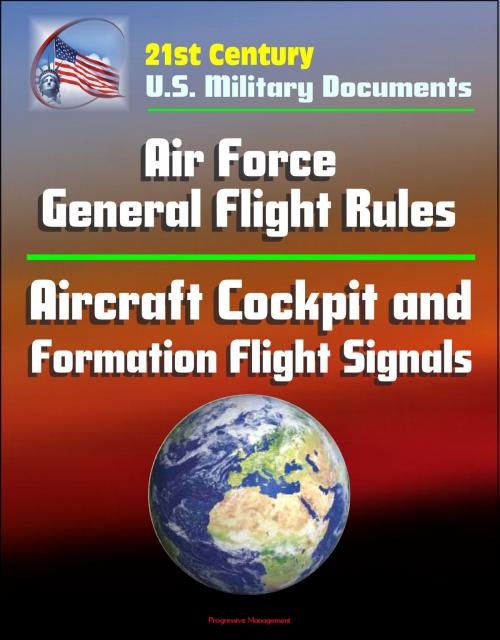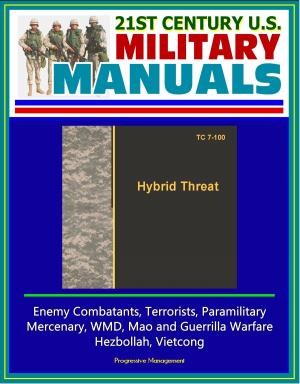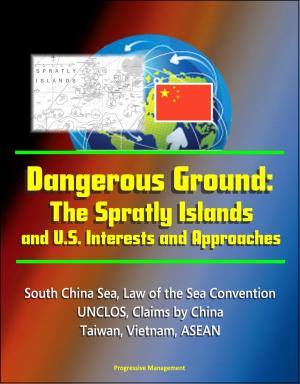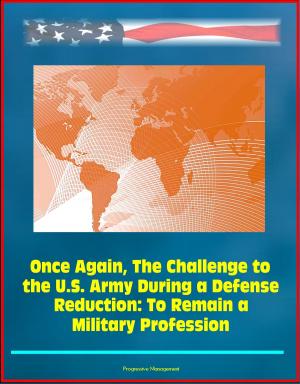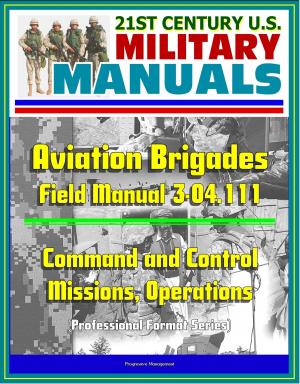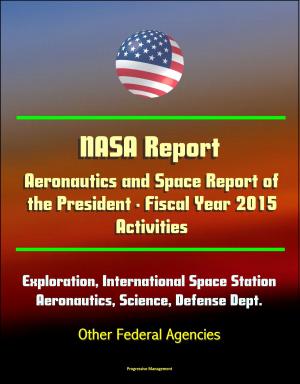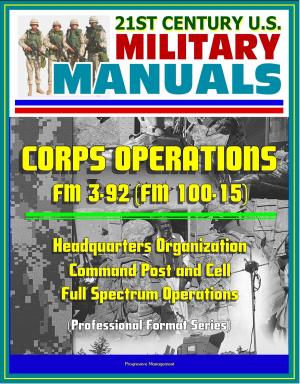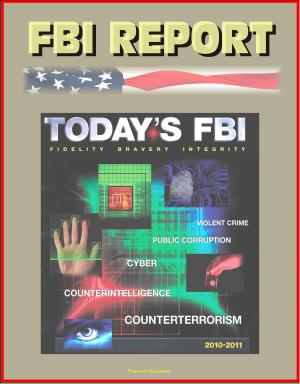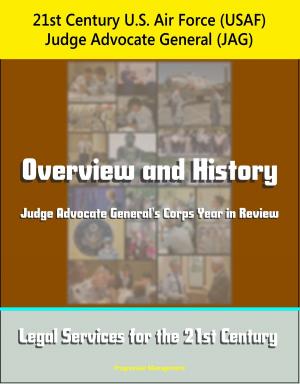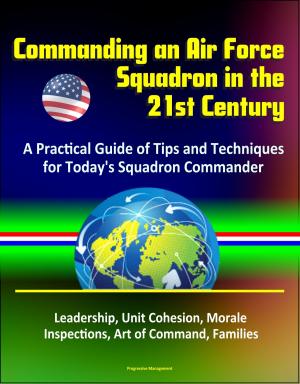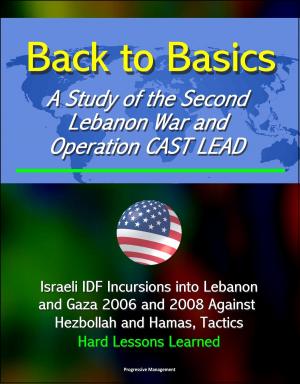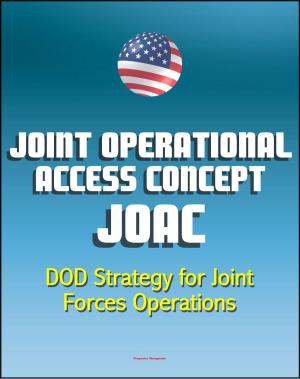21st Century U.S. Military Documents: Air Force General Flight Rules, Aircraft Cockpit and Formation Flight Signals
Nonfiction, Science & Nature, Technology, Aeronautics & Astronautics, History, Military, Aviation| Author: | Progressive Management | ISBN: | 9781310397035 |
| Publisher: | Progressive Management | Publication: | November 15, 2013 |
| Imprint: | Smashwords Edition | Language: | English |
| Author: | Progressive Management |
| ISBN: | 9781310397035 |
| Publisher: | Progressive Management |
| Publication: | November 15, 2013 |
| Imprint: | Smashwords Edition |
| Language: | English |
GENERAL FLIGHT RULES - This instruction implements AFPD 11-2, Aircraft Rules and Procedures, by prescribing general flight rules that govern the operation of USAF aircraft (manned and unmanned) flown by USAF pilots, pilots of other services, foreign pilots, and civilian pilots. This instruction applies to Air Force activities operating aircraft on loan or lease, to the extent stipulated in the loan or lease agreement; Air Force Reserve Command (AFRC) units; and to Air National Guard (ANG) units.
Chapter 1 * GENERAL INFORMATION * 1.1. General * 1.2. Compliance * 1.3. Operational Prerogative of Military Aircraft * 1.4. MAJCOM Supplements and Command Relationships * 1.5. Title 14 CFR Exemptions and FAA Authorizations * 1.6. Waivers * 1.7. Deviations * 1.8. Violations * 1.9. Dimensional Units * Chapter 2 * PREFLIGHT REQUIREMENTS * 2.1. Preflight Planning * 2.2. Airfield Suitability * 2.3. Publications * 2.4. Fuel Requirements * 2.5. Flight Logs * 2.6. Weather * 2.7. Briefings * 2.8. Printed Information Guides * 2.9. Electronic Devices * 2.10. International Destinations * 2.11. Mountainous Terrain * 2.12. Hazardous Cargo * 2.13. Transport of Drugs * 2.14. Foreign Object Damage (FOD) Hazards * 2.15. Equipment Required for Flight * 2.16. Communications, Navigation and Surveillance/Air Traffic Management (CNS/ATM) Systems and Procedures * 2.17. Electronic Flight Bags (EFB) * Chapter 3 * FLIGHT PLANS AND PASSENGER MANIFESTS * 3.1. Flight Plan Requirements * 3.2. Passenger Manifests and Crew Lists * Chapter 4 * FLIGHT AUTHORIZATION, APPROVAL AND CLEARANCE AUTHORITY * 4.1. Flight Authorization * 4.2. Pilot in Command * 4.3. Approval Authority * 4.4. Flight Plan Signature * 4.5. Additional Approval and Requirements * 4.6. Clearance Authority * 4.7. UAS Operations within the NAS * Chapter 5 * GENERAL FLIGHT RULES * 5.1. Professional Flying Standards * 5.2. Transporting Passengers Under the Influence * 5.3. Crew at Stations * 5.4. See and Avoid * 5.5. Proximity of Aircraft * 5.6. Formation Flight * 5.7. Right-of-Way * 5.8. Communication in Flight * 5.9. Aircraft Speed * 5.10. Large Scale Exercises * 5.11. Airport Operations * 5.12. Night Operations * 5.13. Landing Gear Reporting Procedures * 5.14. Altitude Requirements * 5.15. Altimeter Settings * 5.16. Simulated Instrument Flight * 5.17. Simulated Emergency Flight Procedures * 5.18. Touch-and-Go Landings * 5.19. Dropping Parachutists or Objects or Fuel Jettison * 5.20. Aircraft Lighting * 5.21. Aerobatics and Air Combat Tactics * 5.22. Participating in Aerial Events * 5.23. Tobacco Use on USAF Aircraft * 5.24. Landing With Hot Armament * 5.25. Pilot Reporting Procedures * 5.26. Operations in the vicinity of hazards * 5.27. Traffic Alerting and Collision Avoidance System (TCAS) * 5.28. Terrain Awareness and Warning Systems (TAWS) * 5.29. Navigation Procedures for Higher Latitudes * 5.30. UAS Abnormal Flight Operations * 5.31. UAS Lost-Link Procedures * Chapter 6 * AIRCREW FLIGHT EQUIPMENT SYSTEMS * 6.1. General Information * 6.2. Aircrew Flight and Survival Equipment * 6.3. Spectacles, Sunglasses, Contact Lenses, Laser Eye Protection, and NVDs * 6.4. Oxygen Requirements * 6.5. High Altitude Operations * Chapter 7 * VISUAL FLIGHT RULES (VFR)
AIRCRAFT COCKPIT AND FORMATION FLIGHT SIGNALS - This instruction implements AFPD 11-2, Flight Rules and Procedures. It provides guidance and procedures for standard Air Force cockpit and formation flight manuals. It also indicates distress signals that have been standardized for use with North Atlantic Treaty Organization (NATO) forces (NATO STANAG 3379).
GENERAL FLIGHT RULES - This instruction implements AFPD 11-2, Aircraft Rules and Procedures, by prescribing general flight rules that govern the operation of USAF aircraft (manned and unmanned) flown by USAF pilots, pilots of other services, foreign pilots, and civilian pilots. This instruction applies to Air Force activities operating aircraft on loan or lease, to the extent stipulated in the loan or lease agreement; Air Force Reserve Command (AFRC) units; and to Air National Guard (ANG) units.
Chapter 1 * GENERAL INFORMATION * 1.1. General * 1.2. Compliance * 1.3. Operational Prerogative of Military Aircraft * 1.4. MAJCOM Supplements and Command Relationships * 1.5. Title 14 CFR Exemptions and FAA Authorizations * 1.6. Waivers * 1.7. Deviations * 1.8. Violations * 1.9. Dimensional Units * Chapter 2 * PREFLIGHT REQUIREMENTS * 2.1. Preflight Planning * 2.2. Airfield Suitability * 2.3. Publications * 2.4. Fuel Requirements * 2.5. Flight Logs * 2.6. Weather * 2.7. Briefings * 2.8. Printed Information Guides * 2.9. Electronic Devices * 2.10. International Destinations * 2.11. Mountainous Terrain * 2.12. Hazardous Cargo * 2.13. Transport of Drugs * 2.14. Foreign Object Damage (FOD) Hazards * 2.15. Equipment Required for Flight * 2.16. Communications, Navigation and Surveillance/Air Traffic Management (CNS/ATM) Systems and Procedures * 2.17. Electronic Flight Bags (EFB) * Chapter 3 * FLIGHT PLANS AND PASSENGER MANIFESTS * 3.1. Flight Plan Requirements * 3.2. Passenger Manifests and Crew Lists * Chapter 4 * FLIGHT AUTHORIZATION, APPROVAL AND CLEARANCE AUTHORITY * 4.1. Flight Authorization * 4.2. Pilot in Command * 4.3. Approval Authority * 4.4. Flight Plan Signature * 4.5. Additional Approval and Requirements * 4.6. Clearance Authority * 4.7. UAS Operations within the NAS * Chapter 5 * GENERAL FLIGHT RULES * 5.1. Professional Flying Standards * 5.2. Transporting Passengers Under the Influence * 5.3. Crew at Stations * 5.4. See and Avoid * 5.5. Proximity of Aircraft * 5.6. Formation Flight * 5.7. Right-of-Way * 5.8. Communication in Flight * 5.9. Aircraft Speed * 5.10. Large Scale Exercises * 5.11. Airport Operations * 5.12. Night Operations * 5.13. Landing Gear Reporting Procedures * 5.14. Altitude Requirements * 5.15. Altimeter Settings * 5.16. Simulated Instrument Flight * 5.17. Simulated Emergency Flight Procedures * 5.18. Touch-and-Go Landings * 5.19. Dropping Parachutists or Objects or Fuel Jettison * 5.20. Aircraft Lighting * 5.21. Aerobatics and Air Combat Tactics * 5.22. Participating in Aerial Events * 5.23. Tobacco Use on USAF Aircraft * 5.24. Landing With Hot Armament * 5.25. Pilot Reporting Procedures * 5.26. Operations in the vicinity of hazards * 5.27. Traffic Alerting and Collision Avoidance System (TCAS) * 5.28. Terrain Awareness and Warning Systems (TAWS) * 5.29. Navigation Procedures for Higher Latitudes * 5.30. UAS Abnormal Flight Operations * 5.31. UAS Lost-Link Procedures * Chapter 6 * AIRCREW FLIGHT EQUIPMENT SYSTEMS * 6.1. General Information * 6.2. Aircrew Flight and Survival Equipment * 6.3. Spectacles, Sunglasses, Contact Lenses, Laser Eye Protection, and NVDs * 6.4. Oxygen Requirements * 6.5. High Altitude Operations * Chapter 7 * VISUAL FLIGHT RULES (VFR)
AIRCRAFT COCKPIT AND FORMATION FLIGHT SIGNALS - This instruction implements AFPD 11-2, Flight Rules and Procedures. It provides guidance and procedures for standard Air Force cockpit and formation flight manuals. It also indicates distress signals that have been standardized for use with North Atlantic Treaty Organization (NATO) forces (NATO STANAG 3379).
